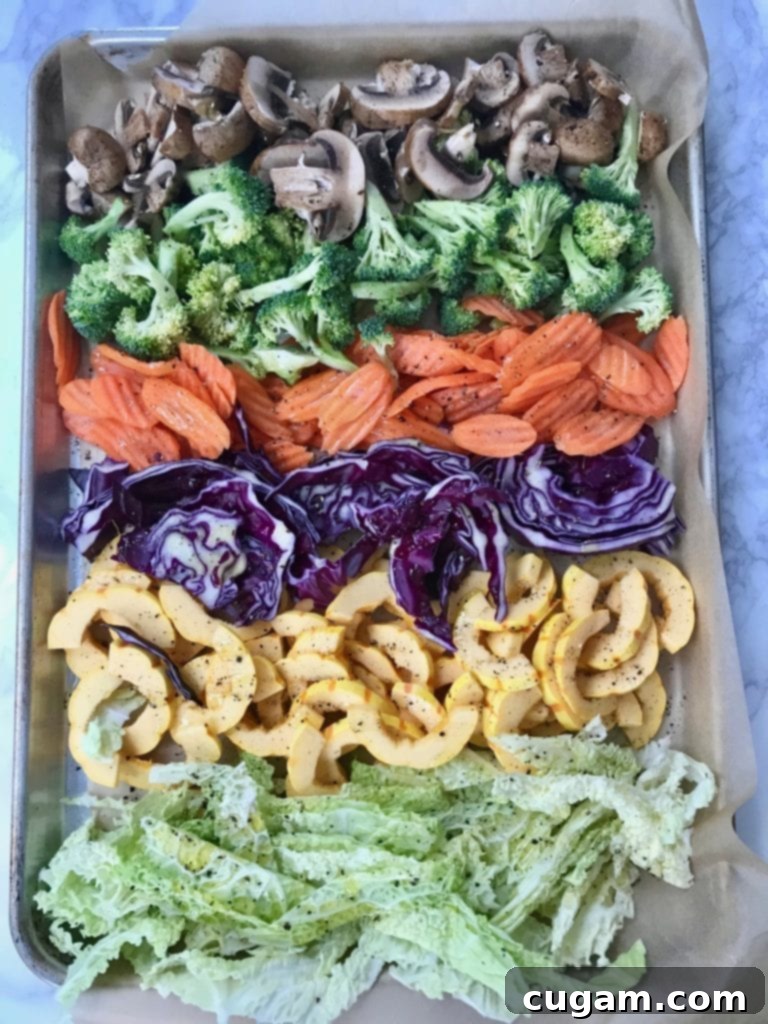Establishing Healthy Habits: Your Guide to a Successful Back-to-School Year
As the back-to-school season approaches, this year might bring a unique blend of in-person, hybrid, or remote learning environments. While the classroom setup may evolve, the fundamental importance of healthy habits for students and families remains constant. In fact, establishing and maintaining sustainable routines for wellbeing is more crucial than ever. A solid foundation of healthy practices not only boosts physical health but also enhances mental clarity, emotional resilience, and academic performance, setting the stage for a thriving school year for everyone.

Looking back at our own family’s first back-to-school moments, one principle has consistently guided us: the power of healthy food choices. While that lunchbox might have seemed almost as big as my child, the commitment to nutritious options has always been paramount. Beyond just food, a holistic approach encompassing sleep, activity, and structured meals forms the bedrock of a successful and balanced academic year. Let’s dive into key areas where you can cultivate healthy habits that will benefit your entire family.
Core Healthy Habits for a Thriving School Year
- BEDTIME: The Foundation of Focus and Immunity
- ACTIVITY: Boosting Mood, Immunity, and Mental Wellbeing
- FOOD: Creating Structure and Nutritional Consistency
- SNACKS: Smart Choices for Sustained Energy
- DINNER: Reconnecting Around the Table
Adequate, restorative sleep is absolutely vital for a strong immune system and a student’s ability to focus and learn effectively. When children and teens get enough quality sleep, their brains can consolidate memories, process information, and prepare for the next day’s challenges. Poor sleep, conversely, can lead to irritability, difficulty concentrating, and increased susceptibility to illness. Re-establishing a consistent bedtime routine, ideally starting a week or two before school begins, is key. This means setting a regular bedtime and wake-up time, even on weekends, and sticking to it diligently. Create a calming pre-sleep ritual, such as a warm bath, reading, or quiet conversation, and ensure bedrooms are dark, quiet, and cool. Limiting screen time before bed is also crucial for better sleep quality.
Movement is a powerful tool for enhancing mood, strengthening immunity, and reducing stress. While traditional school sports and extracurricular activities might be limited or look different, regular physical exercise remains indispensable. Aim for at least 60 minutes of moderate-to-vigorous activity daily for children and teens. Walking is a fantastic, accessible choice that offers the added benefit of connecting with your kids through conversation. Explore family bike rides, hikes, playing in the park, or even active games indoors. Make it a routine to step away from screens and incorporate movement breaks throughout the day, especially for those engaged in remote learning. Consistent activity contributes significantly to both physical and mental health.
In-person schooling naturally provides a structured eating schedule. For families engaged in homeschooling or distance learning, it’s essential to replicate this structure at home. The kitchen doesn’t need to be open 24/7 just because everyone is home. Establish clear meal times: breakfast, lunch, a planned after-school snack, and dinner. This structure helps regulate appetite, prevents constant grazing, and encourages healthier choices. Get your kids actively involved in meal planning and preparation – they are more likely to eat what they’ve helped create. This also teaches valuable life skills and fosters a sense of ownership over their nutrition. Setting clear expectations around meal and snack times will reduce tension and provide consistent opportunities for healthy eating success.
Snacks play a crucial role in providing sustained energy between meals, but the type of snack matters immensely. Prioritize whole, unprocessed foods and aim to avoid processed snacks as much as possible, which are often high in sugar, unhealthy fats, and artificial ingredients. Make sure there are always plenty of colorful, non-starchy vegetables available and easily accessible. A delicious dip, such as low-carb cauliflower hummus or a simple bean dip, paired with cut-up veggies (carrots, bell peppers, cucumber, celery) makes for a perfect and satisfying after-school snack. Remember, what you put out and make EASILY available is what will be eaten most often. Always have healthy alternatives readily accessible – something simple like a sliced apple with nut or seed butter, a handful of berries, or a hard-boiled egg are excellent choices that provide essential nutrients without the sugar crash.
Make it a priority to enjoy a healthy dinner TOGETHER as often as possible. Family meals offer a precious opportunity to connect, share the day’s events, and model healthy eating habits. The benefits extend beyond nutrition, fostering communication, strengthening family bonds, and providing a sense of stability. For those struggling to “get it all done,” smart meal prep strategies can make family dinners a less daunting, more enjoyable reality.
Beyond the Basics: Delightful and Healthy Afternoon Snacks!
While we emphasize whole foods, there’s always room for a healthier twist on beloved treats. An occasional cookie, when made with wholesome ingredients, can be a perfect choice for an after-school pick-me-up (in my humble opinion)! The key is intelligent ingredient swaps that elevate the nutritional profile without sacrificing taste. These recipes offer a fantastic way to satisfy a sweet craving while providing better fuel for growing bodies and minds.
- Healthy Skillet Cookies: A Delicious Secret! This is a chocolate chip cookie like no other, secretly packed with protein-rich chickpeas! Your kids won’t even know. I love this healthy cookie recipe because it’s quick, easy, and offers a substantial boost of plant-based protein, making it a much more satisfying and nutritious snack than a conventional cookie.
- Classic Oatmeal Raisin Cookies: Breakfast-Worthy Snack. A timeless after-school snack, these oatmeal raisin cookies are wholesome enough to even enjoy for breakfast. Oats provide sustained energy and fiber, while raisins add natural sweetness and antioxidants. They’re a comforting and energy-boosting treat without the guilt.
- Indulgent Grain-Free Double Chocolate Cookies: When Chocolate Calls. Sometimes, chocolate is the only answer, and there’s nothing wrong with that! These grain-free double chocolate cookies allow you to satisfy that craving with a healthier alternative. Made without grains, they’re a perfect option for those with dietary sensitivities or anyone looking to reduce their grain intake, proving that healthy can still be incredibly delicious.
HEALTHY HABITS: Mastering Meal Prep Like a Pro
Efficient meal preparation is a game-changer for maintaining healthy eating habits amidst a busy school schedule. It’s a key strategy for reducing stress, saving time, and ensuring that nutritious options are always within reach. Honestly, a simple baking tray and a hot oven are about to become your meal prep best friends. There’s an incredible amount of food you can prep in advance and simultaneously, transforming your weekly cooking routine. Plus, while your tray of healthy food is roasting to perfection, you’re free to turn your attention to other tasks, making the most of your time. Incorporating meal prep into your routine is one of the most effective healthy habits you can adopt.

Imagine a single tray of roasted vegetables transforming into multiple delicious meals throughout the week. Roasted veggies can be easily added into a comforting soup, a vibrant chopped salad, flavorful tacos, or savory enchiladas. They can be used as a wholesome filling for baked potatoes, stirred into an omelet or a tofu scramble for a protein-packed breakfast, or simply served as a versatile side dish with almost any meal. Their versatility makes them an indispensable component of efficient meal prep.
Simple Roasted Veggies: Your Versatile Meal Prep Base
Roasting vegetables brings out their natural sweetness and creates a depth of flavor that can elevate any dish. It’s a simple technique that yields incredible results, making healthy eating both easy and enjoyable.
- Preheat Oven: Set your oven to 375°F (190°C).
- Prepare Baking Sheet: Line a large, rimmed baking sheet with unbleached parchment paper for easy cleanup and to prevent sticking.
- Chop Your Favorites: Prep a variety of vegetables that you and your family enjoy. Think broccoli, cauliflower, bell peppers, zucchini, carrots, Brussels sprouts, onions, and sweet potatoes. Pay close attention to size; chop everything into similar, bite-sized pieces to ensure even cooking. This prevents some pieces from burning while others remain raw.
- Season Generously: Drizzle the chopped vegetables with a good quality olive oil, then sprinkle generously with salt and black pepper. For extra flavor, consider adding herbs like dried oregano or thyme, garlic powder, or a pinch of paprika.
- Roast to Perfection: Roast for 15-25 minutes, or until the vegetables are tender-crisp and slightly caramelized. The exact time will depend on the type and size of your vegetables. Toss them halfway through for even cooking.
- Store for Later: Use the roasted veggies warm right away, or allow them to cool completely before storing them in an airtight container in the fridge for up to 5 days. They are perfect for quick additions to meals throughout the week.

Similarly, roasting a tray of potatoes or sweet potatoes to have on hand is incredibly convenient. They’re an easy way to transform a simple meal into something more delicious, nutritious, and hearty. Beyond being a delightful side dish, roasted potatoes can be added to things like nourishing salads, wholesome breakfast bowls, vibrant tacos, or comforting enchiladas, providing complex carbohydrates and essential nutrients that keep you feeling full and energized.
BASIC ROASTED SWEET POTATOES: Preheat your oven to 425°F (220°C). Cut sweet potatoes into small (¼-inch) dice. Drizzle with olive oil and sprinkle with a blend of cumin, chili powder, turmeric, black pepper, and sea salt for a flavorful kick. Roast until they are tender and slightly crispy, usually around 20-25 minutes, depending on how small you cut them. These vibrant cubes are not only delicious but also packed with vitamins and fiber.
SALAD DRESSING/SAUCE: The Flavor Secret to Quick Healthy Meals
Having one or two homemade salad dressings or versatile sauces prepped and stored in your fridge is one of the most effective strategies for dishing out healthy meals, even when your schedule is packed. A delicious dressing can transform a simple bowl of ingredients into an extraordinary meal. You can effortlessly build a customizable “bowl” – combining grains, legumes, fresh greens, last night’s leftovers, and more – that will be utterly amazing IF you have a tasty, homemade dressing to tie it all together. Store-bought dressings often contain unhealthy oils, added sugars, and artificial ingredients, so making your own ensures you’re fueling your body with the best. Here are a few of my favorites that I make weekly, perfect for adding zest to any meal:
- Creamy and Tangy Vegan Caesar Dressing
- Bright and Zesty Creamy Avocado Dressing
- Nutty and Earthy Green Tahini Sauce
- Sweet and Tart Apple Vinaigrette
- Versatile Basic Creamy Vegan Dressing
HEALTHY HABITS: Making Family Dinner a Priority
Eating dinner together as often as possible is a cornerstone of a healthy family lifestyle. It’s not just about the food; it’s about connection, communication, and creating lasting memories. My top ideas for dinner (or lunch) are designed for easy customization, ensuring you’re making just ONE MEAL for everyone, catering to diverse tastes and preferences. Concepts like a salad bar or a taco bar are perfect choices for this. These interactive meals allow each family member to build their own plate, reducing mealtime battles and encouraging adventurous eating. Offer a protein choice (or two) and then a variety of colorful, healthy options. Always make sure to include at least one item that you know each person will genuinely like, ensuring everyone leaves the table satisfied.
The Ultimate Salad Bar: Customize Your Way to Health
A salad bar for dinner turns a simple meal into a fun, interactive, and highly nutritious experience. It’s an excellent way to use up ingredients you have on hand and ensures everyone gets their preferred veggies and toppings.
- Protein Power: Don’t forget that protein is found in many places beyond meat. Good plant-based sources include various beans (black, kidney, chickpeas), lentils (green, red, brown), and even grains like quinoa, which is a complete protein. Cooked edamame, toasted nuts, and seeds (like pumpkin or sunflower) are also fantastic additions that help fulfill daily protein requirements and add texture.
- Hearty Grains: Make grains a regular feature in your weekly meal prep. It takes no time at all to cook a pot of rice (brown, wild), farro, quinoa, or millet. Cold, cooked grains are perfect to offer on your salad bar, adding substance, fiber, and sustained energy to any bowl.
- Cooked Veggies: Elevate a “boring” salad into something spectacular by including warm, cooked vegetables. Prepare a tray (or two) of single or assorted roasted or steamed veggies, such as the simple roasted veggies discussed above. They add a wonderful depth of flavor and texture.
- Fresh Raw Veggies: Chop up a colorful assortment of whatever raw vegetables you have on hand – cucumber, bell peppers, carrots, tomatoes, radishes, red onion, and shredded cabbage are all great. Ensure there’s a choice out there that everyone, even the pickiest eater, will enjoy.
- Diverse Greens: Over the course of a week, try to get in an assortment of different greens. Buy a variety each time you shop. Romaine, spinach, kale, spring greens, arugula, butter lettuce – they are all good and offer a different nutritional profile, adding essential vitamins and minerals.
- Leftovers Are Gold: YUP! Don’t let good food go to waste. Whatever healthy leftovers you’ve got – perhaps some roasted chicken, grilled veggies, or a grain salad – put it out there as an option for your salad bar. It’s a fantastic way to repurpose food and add variety.
- The Perfect Dressing: A great dressing brings everything together. If you don’t have anything already prepared from your meal prep, use this simple homemade salad dressing recipe, or one of the favorite recipes linked above.
- Get more creative ideas for salads here to keep your family meals exciting and nutritious.
The Fun and Flavorful Taco Bar!
A taco bar is arguably the tastiest and most interactive way to get dinner on the table fast, making it a family favorite. Start with a versatile base like this basic fajita recipe, and then let everyone’s creativity soar! The beauty of a taco bar is that everyone loves to customize their own. I personally enjoy adding this vibrant avocado lime sauce to mine for an extra burst of freshness and flavor. Whether you use traditional taco shells, soft tortillas, or even lettuce wraps, if there’s a base and an assortment of tasty fillings, we call it tacos! There’s not just one way to do it, but at our house, it usually includes a refreshing simple slaw and some homemade guacamole, along with various plant-based proteins like seasoned black beans, lentils, or tofu crumbles, and plenty of fresh salsa and chopped veggies. It’s a guaranteed crowd-pleaser that allows for endless healthy variations.
HEALTHY HABITS: A Lifestyle, Not a Destination
So, there you have it: a comprehensive guide to establishing and maintaining healthy back-to-school habits. These suggestions, which emphasize adequate sleep, consistent physical activity, nutritious food choices, and valuable family time, are not just for the academic year; they are essential principles for wellbeing at all times and for every individual. We are all on our own unique health journeys, with different starting points and evolving needs. Understand that where you are right now is exactly where you are supposed to be. Be kind and generous with yourself and your family as you implement these changes. Focus on progress, not perfection. Embrace the journey of cultivating a healthier lifestyle, celebrating small victories, and building sustainable habits that will support a successful, joyful, and thriving school year and beyond.
